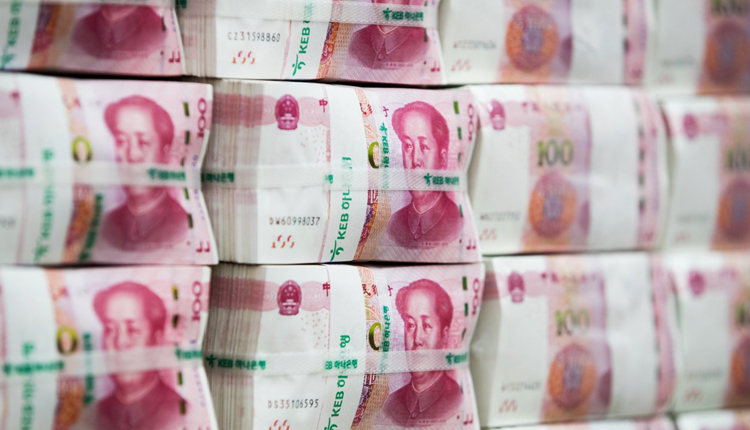The offshore yuan pulled back from an all-time low on Tuesday after Beijing appeared to take steps to prevent the currency from weakening further, following a sharp drop that prompted the U.S. government to declare China was manipulating its currency.
The yen erased gains versus the dollar and fell against most major currencies, while the dollar index against major peers remained on the back foot after Monday’s rapid escalation in tensions pushed the U.S.-China trade war into uncharted territory.
On Monday, China let the onshore yuan break through the key 7 per dollar level for the first time since the global financial crisis, sending global financial markets into a tailspin, and investors are closely watching to see how much more Beijing will allow it to fall.
China said early on Tuesday it was selling yuan-denominated bills in Hong Kong, in a move seen as curtailing short selling of the currency.
It also set a daily mid-point for onshore trade that was slightly firmer than markets had expected, though it was still the weakest level since May 2008.
However, the dollar remained down against the euro, while U.S. stock futures fell on worries the trade conflict with China would hurt U.S. economic growth and corporate profits.
U.S. Treasury Secretary Steven Mnuchin said in a statement on Monday the government had determined that China is manipulating its currency and that Washington would engage with the International Monetary Fund to eliminate unfair competition from Beijing.
Yuan’s sudden drop through the 7 mark came days after President Donald Trump announced he would impose 10 percent tariffs on $300 billion of Chinese imports, ending a month-long trade truce.
“The recovery in yuan and the move in the yen is triggered by the fixing, which has eased some concern about competitive currency devaluation,” said Masafumi Yamamoto, chief currency strategist at Mizuho Securities in Tokyo.
“China is not really trying to dramatically weaken its currency. However, nothing has been resolved in the trade war.”
The offshore yuan initially fell to 7.1265 per dollar, the lowest since offshore trading began in 2010, but then erased these losses to trade unchanged at 7.1004.
The onshore yuan opened trade at 7.0699 per dollar and was last at 7.0569, versus its last close at 7.0498.
The dollar initially fell versus the yen to 105.51 yen, the lowest since a flash crash in January that roiled currency markets, but then erased to rise 0.34 percent to 106.32.
The yen also weakened against major crosses after the latest moves from Beijing.
The New Zealand dollar surged 0.9 percent to 69.79 yen, while the Australian dollar rose 0.7 percent to 72.08 yen.
The euro rose 0.3 percent versus the dollar to $1.1238, its strongest level since July 19.
In Asian trade S&P 500 futures fell 0.7 percent due to concern about how the trade war will impact the U.S. economy.
Elsewhere in currency markets, the Australian dollar rose 0.4 percent to $0.6787 before a Reserve Bank of Australia meeting later on Tuesday.
The RBA is expected to leave its benchmark interest rate at a record low of 1.00 percent , but the trade war is a source of concern for Australia’s economy because it ships a lot of raw materials to China.
The New Zealand dollar jumped by 0.5 percent to $0.6562, its biggest daily gain in three weeks, after New Zealand’s jobless rate fell to an 11-year low.
The Reserve Bank of New Zealand is expected to cut interest rates to a record low of 1.25% on Wednesday, but strong unemployment data suggests the economic is not as bad as some had speculated.
Source: Reuters
